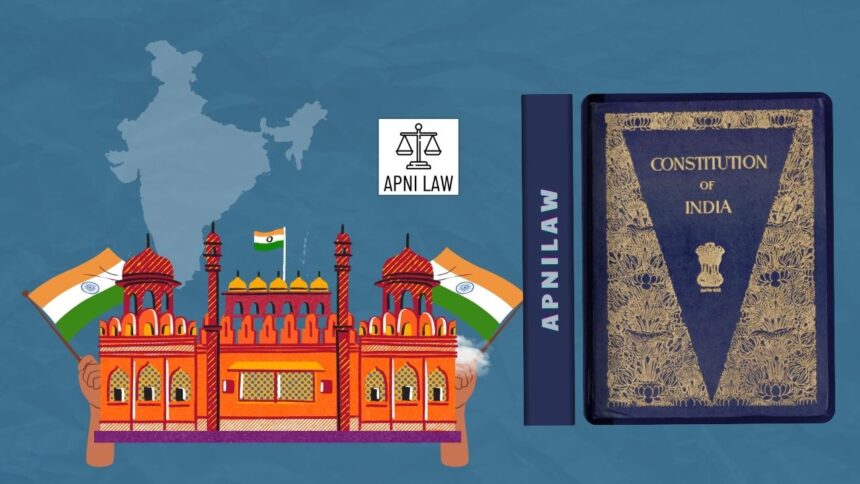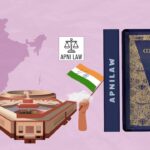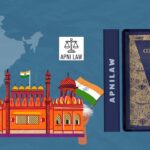Introduction
The Parliament of India stands at the heart of the country’s democratic framework. Every law that governs the nation begins its journey here, making the Parliament not only a symbol of people’s power but also the central law-making authority. Article 79 of the Indian Constitution lays the foundation of this powerful institution. It defines how Parliament is structured and who forms its core. Although the article seems short, it carries immense constitutional weight, because it identifies the three essential pillars that together form the supreme legislative body of India.
Understanding Article 79 is important for students of law, civil service aspirants, policy researchers, and anyone who wants clarity about how the Indian parliamentary system works. This article does not function in isolation; instead, it influences how laws are framed, how debates occur, how representation is ensured, and how democratic decisions are shaped. Through this explainer, you will understand the meaning, relevance, and practical importance of Article 79. The discussion also highlights examples, related constitutional provisions, and how this article shapes the broader working of Indian democracy.
Meaning and Explanation
Article 79 states that the Parliament of India consists of the President, the Lok Sabha, and the Rajya Sabha. This means Indian Parliament is a three-part body, and each component plays a distinct but interconnected role. The President is an integral part of the Parliament even though they do not sit in the House or participate in debates. Their role becomes active when laws need approval, when sessions are summoned, and when special parliamentary powers are exercised.
The Lok Sabha is the House of the People. It represents citizens directly and functions as the primary law-making chamber. Members are elected through general elections, which gives the Lok Sabha democratic legitimacy. The Rajya Sabha represents the states and union territories. It ensures that law-making does not ignore regional interests. Members are elected by State Legislative Assemblies, giving the House a more balanced federal character.
Together, these three institutions create a structure where laws get debated, examined, modified, and finally approved. Article 79 ensures that the Indian Parliament functions as a unified system instead of three separate authorities acting independently.
Relevance and Applicability
Article 79 is central to understanding India’s parliamentary democracy. It establishes the composition of Parliament and makes it clear that the President is not a ceremonial spectator but a constitutional part of the law-making process. For example, no bill becomes a law unless the President grants assent. Similarly, no parliamentary session begins without the President’s summons. This shows how Article 79 shapes the relationship between the executive and the legislature.
The article also reinforces the bicameral nature of the Indian Parliament. The presence of two houses encourages debate, scrutiny, and accountability. If only one house existed, laws could pass without adequate review. Thanks to Article 79, India benefits from a double-chamber system where each bill goes through two different lenses before becoming a law. The Lok Sabha reflects the public pulse, while the Rajya Sabha represents the institutional wisdom of the states.
Students analysing Indian constitutional provisions will notice that Article 79 also supports the federal structure. It ensures that law-making remains inclusive and that regional voices are not overshadowed by national politics. The Rajya Sabha embodies this purpose, and its connection to Article 79 makes it indispensable.
Case Law, Examples, and Practical Use
Several landmark judgments have interpreted Article 79 while explaining the functioning of Parliament. In Raja Ram Pal v. Speaker, Lok Sabha (2007), the Supreme Court clarified that parliamentary procedures derive authority from constitutional provisions, and Article 79 is one of the pillars that define the institution’s existence. The judgment recognised Parliament as a unified constitutional body that must function within constitutional limits.
A practical example of Article 79 in action can be seen in the process of passing a bill. A bill must be introduced in either House, except in specific cases like Money Bills which can only originate in the Lok Sabha. After debate and approval in both Houses, it is sent to the President. Only after the President gives assent does the bill become an Act. This final step reflects the President’s role as part of Parliament.
Another example is the joint session of Parliament. When the Lok Sabha and Rajya Sabha disagree on a bill, the President summons a joint session under Article 108. This power exists because Article 79 makes the President a constitutionally integrated part of Parliament.
The most practical use of Article 79 lies in ensuring the legitimacy of parliamentary functioning. Without a clear constitutional definition of who constitutes Parliament, law-making would lack foundational authority.
Step-by-Step Guide (Procedural)
Understanding how Article 79 shapes the functioning of Parliament becomes clearer when we look at how Parliament performs its primary duty: law-making.
The process begins with the President summoning Parliament for a session. A bill is introduced in one of the Houses. Members debate, suggest changes, and vote. If one House passes the bill, it moves to the other House. Once both Houses approve it, the bill is sent to the President. The President can give assent, withhold assent, or return the bill for reconsideration, except in cases of constitutional amendments. After assent, the bill becomes a law and is notified for implementation.
Every step of this procedure reflects how each component of Article 79 functions in harmony to maintain democratic law-making.
FAQ Section (3–5 Questions)
What does Article 79 of the Constitution state?
Article 79 states that the Parliament of India consists of the President, the Lok Sabha, and the Rajya Sabha. It establishes the structure of Parliament.
Is the President a member of Parliament?
The President is not a member of either House, but Article 79 makes the President an essential part of Parliament for legislative purposes.
Why is Article 79 important?
It defines the composition of Parliament and ensures that law-making follows a constitutional structure involving all three entities: the President, Lok Sabha, and Rajya Sabha.
Does Article 79 influence federalism?
Yes. By including the Rajya Sabha, Article 79 helps protect state interests within national law-making.
Can Parliament function without the President?
No. Sessions cannot begin and bills cannot become laws without the President’s constitutional role.
Conclusion
Article 79 may appear simple, yet it forms the backbone of India’s parliamentary democracy. It ensures that the President, Lok Sabha, and Rajya Sabha work together in harmony to create laws that guide the nation. The article strengthens democratic values, supports federal balance, and establishes a clear legislative structure. For law students and researchers, Article 79 offers an essential entry point into understanding how India’s parliamentary system truly operates. If you need guidance on constitutional interpretation, legislative procedure, or related legal issues, consulting a professional from ApniLaw can provide clarity and practical insights.








